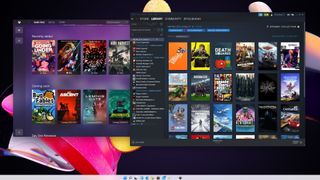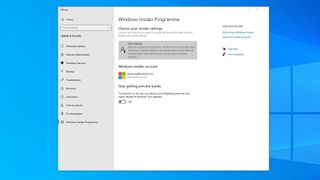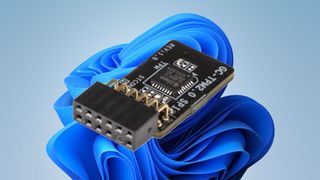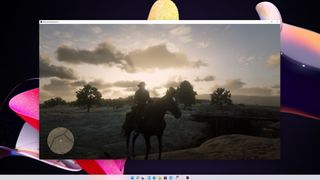Windows 11: How to safely install the new Insider Preview build
The new OS update has dropped, but you shouldn't be installing it over your main build just yet.

- Register for Windows Insider Program
- Check Windows 11 minimum system requirements against your PC
- Enable TPM 2.0 via BIOS
- Download Windows 10 ISO via Media Creation Tool
- Install Windows 10 on separate drive/partition
- Enable Windows Insider Program Dev Channel
- Download Windows 11 via Windows Update
- Enjoy your buggy, feature-incomplete Windows 11 Insider Preview
Windows 11 is here and more than just in name only because, as promised, preview builds of the new Microsoft OS have started going out to Insiders. But who are these mysterious Windows Insiders and how can we join their illustrious ranks?
Essentially, they're you and me. Enthusiastic tech junkies happy to suffer the slings and arrows of outrageous early code bugs. And all you need to do is let Microsoft into your heart. And PC. Especially your PC.
Signing up to become a Windows Insider is a simple matter of registering with the same Microsoft account you log into Windows with and allowing Microsoft to gather diagnostic data from your machine. And once that's done you can pick a channel and gain access to the very first public build of Windows 11.
Well, the first legitimately publicly available build anyway.
But how do you do it safely, without compromising your current gaming rig and all the precious saves, pics, and game worlds that exist therein? The early preview builds will be feature-incomplete and buggy, but there are ways to check out the future of Windows safely.
The first Windows 11 Insider Preview build (22000.51) is ready to download from the Dev Channel of the Insider program, and offers our first glimpse of the new Start menu, centred Taskbar, rounded windows, and soothing sound effects. Yes, Microsoft has gone ASMR.
AutoHDR has also made an appearance as one of the new Windows 11 gaming features, though has been floating around Insider builds of Windows 10 for a little while, too, while Microsoft shore it up.
The biggest gaming news, reviews and hardware deals
Keep up to date with the most important stories and the best deals, as picked by the PC Gamer team.
Become a Windows Insider

How do I become a Windows Insider?
The first step is to sign in with your Microsoft account (which can just be your Hotmail/Outlook account) at the Windows Insider Program home page and click the big blue 'Register' button.
Then you just have to accept the terms and conditions, hit submit, and you're in.
Once you've set yourself up as one of the Insider chosen you can then straightaway go to the Windows Insider Program settings screen in the main Settings app of Windows 10. You may have to enable optional diagnostic data to progress here if you initially had that disabled.
You will then have to pick from either the Dev Channel, Beta Channel, or Release Preview Channel. These are essentially ranked in terms of the most buggy to the closest to release—right now Windows 11 is only just hitting the Dev Channel. Microsoft describes the different channels thus:
- If you want to be the first to get new updates and can handle some issues and bugs, you might want to try the Dev Channel.
- If you want more reliable updates but to give us impactful feedback, you might want to try the Beta Channel.
- Or if you want something extremely stable, you can try the latest version of Windows, but with ongoing advanced quality updates and key features in the Release Preview Channel.

You will also want to check your system's specs against the minimum system requirements for Windows 11. Now, that's easier said than done after Microsoft pulled the PC Health Check app which did it automatically, but essentially almost any PC from the past four years or so will be eligible.
There are CPU compatibility lists, but Microsoft seems just as confused as we are about which ones will actually work with the latest builds, so it may just be a case of trying it out if you have an older processor.
The main hurdle is the Windows 11 requirement for TPM 2.0 support, though for most of us that will simply require a trip into your BIOS to enable. You will have to check how to do that yourself, as it varies from manufacturer to manufacturer. Some label it simply as an option to enable TPM 2.0, while I found my Asus ROG Z490 board referred to it as PTT (Intel's own Plaform Trust Technology, which incorporates TPM 2.0).
Install Windows 11

How do I install Windows 11?
Anyway, when this has been enabled at a BIOS level you should then be able to install the Windows 11 Insider Preview. And once you've enabled the Windows Insider checkbox in your Settings menu then all you need do is head over to Updates and give it a check; Windows 11 Insider Preview will magically appear, start downloading, and then install.
But that's a bit ambitious for my tastes.
The safest way to deal with a whole new OS is to use it from within a virtual machine, a fake virtual PC that doesn't run the risk of corrupting any real-life hardware. But where's the fun in that?
To get a feel for a new OS you need to use it like you would on your 'normal' PC. And for that I'm going to suggest dual-booting. Now, there can be issues with dual-booting different operating systems on one machine, mostly down to when the time comes to remove one of them, but the whole process is pretty streamlined right now with Windows 10.
To be completely secure you could always remove your day-to-day drive from your PC entirely, eliminating the risk of corrupting your standard system boot. But, for now, I'm okay with dual-booting my system. Ask me again in six months, however, and you might get another answer..
If you have a spare drive—ideally an SSD to give DirectStorage a bash when it finally makes an appearance, though I appreciate few are likely to have one just lying around—or a bunch of spare capacity on an existing drive, then you can create a partition to dedicate to Windows 11.

You will have to drop a fresh install of Windows 10 on there first, but that's easy, and free. Just head to the Windows 10 download page to create some installation media (ideally at least an 8GB USB drive), boot directly from that, and then install to your chosen drive/partition.
This will create two different options when you boot your PC from now on, to start with that will be a touch confusing as it will present two versions of Windows 10. But pick the empty install and you can start messing.
Once Windows 10 is installed all fresh-faced and new, you can dip into the Windows Insider Program settings page of your new install and enable it. Then Windows 11 will be available from the Update page and will install automatically.
And it doesn't take too long to update and install either, depending on your download speed. I was up and running in no time with a whole new operating system to explore.

Dave has been gaming since the days of Zaxxon and Lady Bug on the Colecovision, and code books for the Commodore Vic 20 (Death Race 2000!). He built his first gaming PC at the tender age of 16, and finally finished bug-fixing the Cyrix-based system around a year later. When he dropped it out of the window. He first started writing for Official PlayStation Magazine and Xbox World many decades ago, then moved onto PC Format full-time, then PC Gamer, TechRadar, and T3 among others. Now he's back, writing about the nightmarish graphics card market, CPUs with more cores than sense, gaming laptops hotter than the sun, and SSDs more capacious than a Cybertruck.
Most Popular

